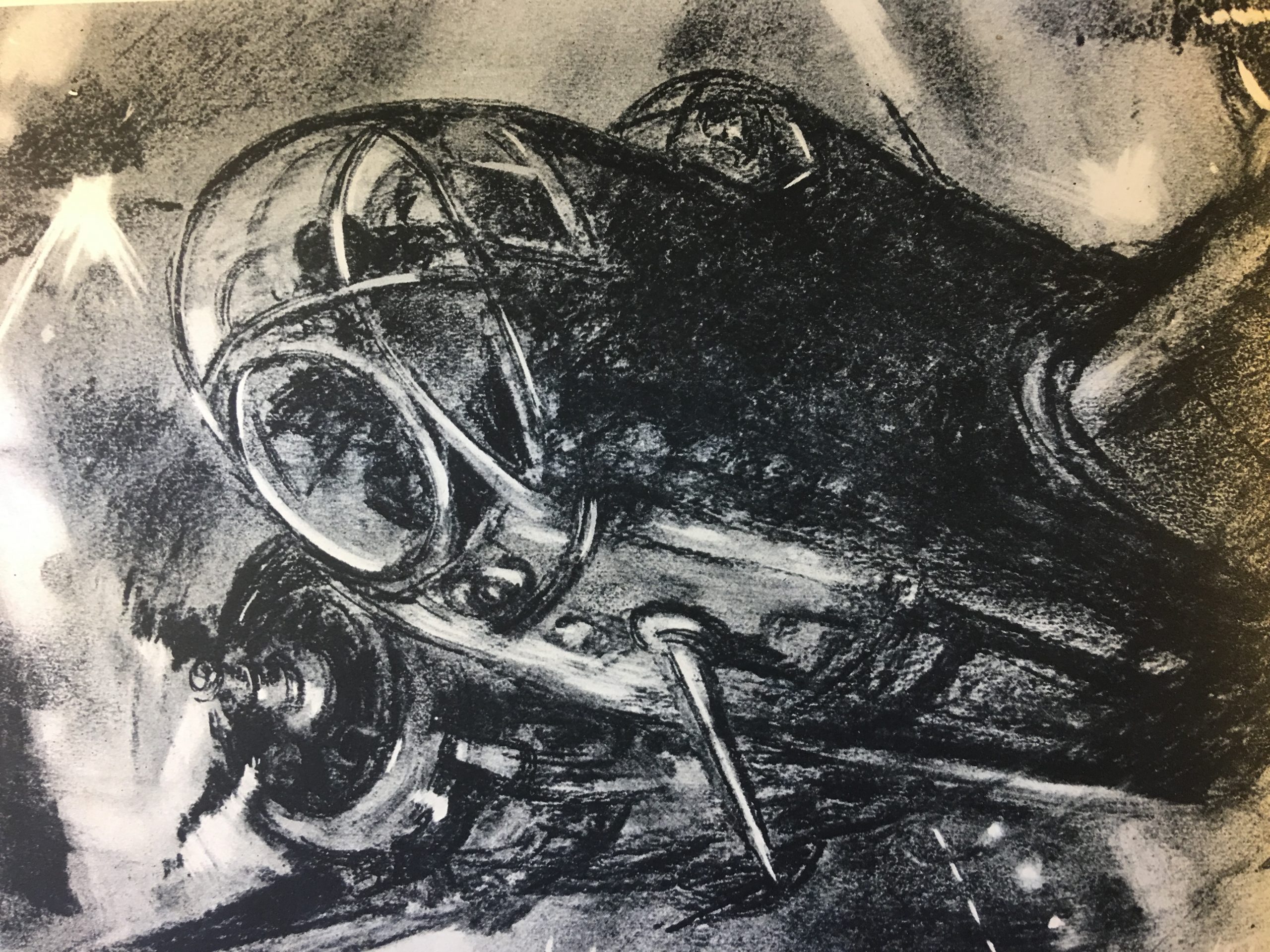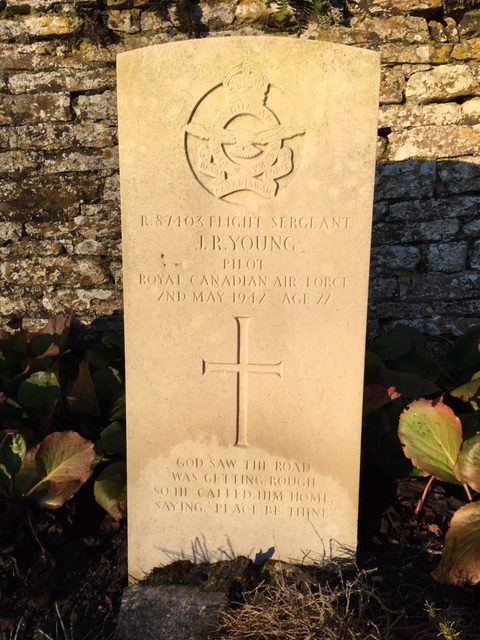On the 4 March 1945 a Lancaster 1 PD431 crashed 100 yard east of the village church St Mary the Virgin. The aircaft was crewed by 8 men, 3 of which were Australian. In the crash 7 men died and 1 was injured. The 8th crew member (Sgt Ratcliffe) who was injured, died the following day in hospital.
The men were posted to 1953 Heavy Conversion Unit (HCU) and were training as a crew, before being posted to a unit, probably to serve in operations against Nazi Germany.
The entry from the Bomber Command HCU losse, shows that the takeoff was at 1130 for a cross country navigation exercise and they returned to base at 4pm. A bad landing and bounce led to a ‘go-around’ but a strike (undercarriage hitting something) on an obstruction (unknown – near airfield) meant the aircraft hit trees in the village and subsequently crashed into the village. It is not known if anyone on the ground was hurt.

The entry also refers to 4 of the crew having been injured in a crash of a Stirling on night of 17/18 August 1944 where their aircraft had landing gear problems and they crash landed on a runway at RAF Wratting Common at 0206 hours , unfortunately hitting another Stirling that had been immobilised with a burst tyre on the runway.

The crash of PD431 was one of 11 Lancasters lost by 1653 HCU between January and March 1945. At the sister unit 1651 HCU operating at RAF Woolfox Lodge between January and March 1945 they lost 10 Lancasters. The operational units were flying Lancaster 3s and the HCU were probably flying older used machines.

I have yet to put further details of these losses togther. 1651 HCU also lost 2 aircraft due to enemy action on the night of 3/4 March 1945 – this tragic story is told in the post on this blog concerning Op Gisela. http://www.rafnorthluffenhamheritage.me.uk/?tag=op-gisela
On the 4 March 2025 the church bells were rung at 4pm and a roll call taken – near the memorial plaque erected outside the church. Lest we forget. The words spoken at the ceremony were:
Welcome. Thank you all for coming to be here today. I have some short words about the crash. Mr Michael Hoff – will read the roll of honour. I will say the Kohima address and then the bells will ring. You are welcome to join us afterwards – at the Memorial Hall for tea.
Firstly – I would like to say a few words based the sentiment on our Kings words at D Day ceremoniesn World War 2 our Nation and those which stood alongside us faced what King George VI, described as “The Supreme Test”. How fortunate we were, and the entire free World, that a generation of men and women in the United Kingdom and other Allied nations did not flinch when the moment came to face that test.
Today, we come together to honour those who fell nearby in the Lancaster crash on this day in 1944. This aircraft landed back at the airfield after a cross country navigation exercise, it bounced and hit an obstruction. Some sources say the obstruction was a van and a man on the ground was fatally injured dying next day. The aircraft was damaged and could not gain height and crashed in flames 200 yards that way – killing all on board. This was one of 13 Lancaster lost by 1653 Heavy Conversion Unit in just under a 2 year period.
Also it should be remembered that this aircraft is one of about 60 aircraft which have crashed in the vicinity of this aerodrome, including the Canadian fatalities in the 1950s Cold War, flying the Sabre jet. Overall, perhaps 150 men failed to survive within 3 miles of the aerodrome. The casualties on missions and prisoners of war from the airbase are another story. More recently the Army dog handlers – suffered 2 deaths on operations in Afghanistan.
As the King said – Our Armed Forces carried out their duty with a humbling sense of resolve and determination: qualities so characteristic of that remarkable wartime generation. Very many of them never came home. It is with the most profound sense of gratitude that we remember them, and all those who served at that critical time. We recall the lesson that comes to us, again and again, across the decades: free Nations must stand together to oppose tyranny.
The roll of honour.
The Kohima address. When you go home, tell them of us and say, for your tomorrow we gave our today. They shall not grow old, as we that are left grow old. Age shall not weary them , nor the years condemn. At the going down of the sun and in the morning, we will remember them
2 relatives attended and a numberof local people particpated. An information board was available and local detail was discussed and the varying views of what happened. As further detail emerges form research I will endavour to post an update here.


Refrences: Bomber Command Losses – volume HCUs. Avro Lancaster – the definitive record by Harry Holmes


































